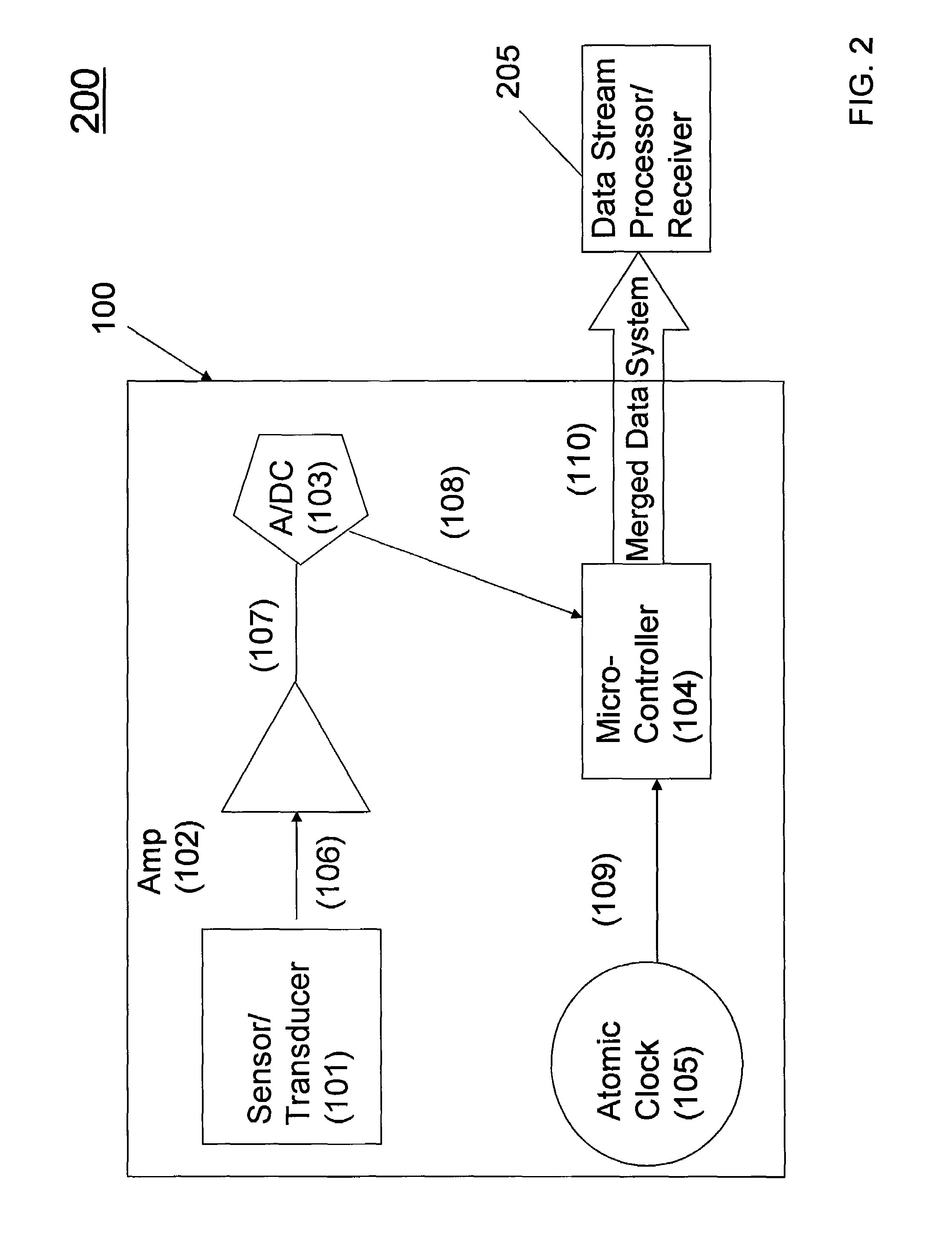Sensor synchronization using embedded atomic clocks
a technology of atomic clocks and sensors, applied in the field of system and method of synchronizing data using an embedded atomic clock, can solve the problems of large volume of independent data that cannot be easily and/or accurately correlated, and the results of vibration analysis are not correlated,
- Summary
- Abstract
- Description
- Claims
- Application Information
AI Technical Summary
Problems solved by technology
Method used
Image
Examples
Embodiment Construction
[0017]Although the invention is illustrated and described herein with reference to specific embodiments, the invention is not intended to be limited to the details shown. Rather, various modifications may be made in the details within the scope and range of equivalents of the claims and without departing from the invention.
[0018]In order to reliably and accurately accomplish the transmission (and subsequent fusion) of error-free data from a suite of independent sensors or a multi-platform array of individually operating data collection systems, it is advantageous that each of the data elements be time-stamped at the point of measurement, so that the data elements become effectively synchronized in time.
[0019]Referring to the exemplary embodiment illustrated in FIG. 1, an atomic clock integrated sensor is designated generally by the numeral 100. The integrated sensor 100 includes sensor transducer 101, which may be an accelerometer, thermocouple, strain gauge, or pressure transducer,...
PUM
 Login to View More
Login to View More Abstract
Description
Claims
Application Information
 Login to View More
Login to View More - R&D
- Intellectual Property
- Life Sciences
- Materials
- Tech Scout
- Unparalleled Data Quality
- Higher Quality Content
- 60% Fewer Hallucinations
Browse by: Latest US Patents, China's latest patents, Technical Efficacy Thesaurus, Application Domain, Technology Topic, Popular Technical Reports.
© 2025 PatSnap. All rights reserved.Legal|Privacy policy|Modern Slavery Act Transparency Statement|Sitemap|About US| Contact US: help@patsnap.com



